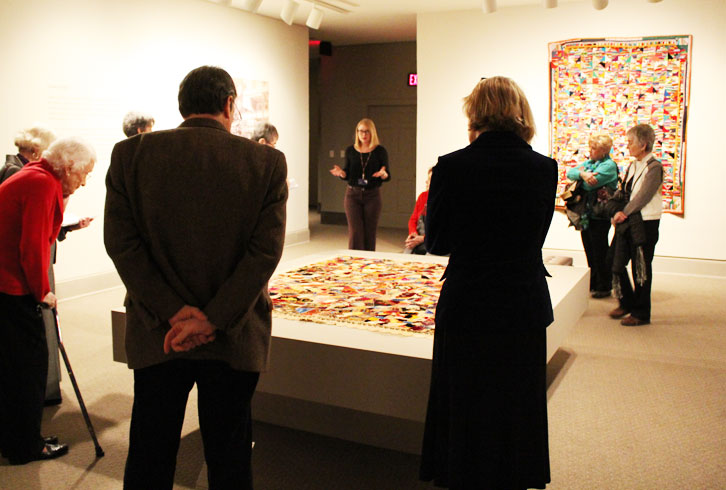NMWA’s new exhibition, “Workt by Hand”: Hidden Labor and Historical Quilts, is now on view. Interested in learning more?

Gift of Mr. and Mrs. H. Peter Findlay, 77.122.3; Photography by Gavin Ashworth,
2012, courtesy of the Brooklyn Museum
The show features 35 18th–20th-century quilts from the Brooklyn Museum’s renowned decorative arts collection. At NMWA, beautiful examples of a wide variety of quilt patterns and techniques are on view, but the exhibition also explores the historical interpretations of these quilts.
Over the years, people have seen these objects as artworks, mere utilitarian items, and other seeming contradictions. Often because of prevailing political or social trends, quilts have been viewed with a nostalgia that is, contrary to popular belief, not always perfectly accurate. For example, while quilt-makers have traditionally been seen as thrifty and resourceful, many were in fact from wealthy households that could afford the imported luxury fabrics that adorn them. These and other trends reveal the way quilts have been blank canvases for the popular imagination. Minimalist art, feminism, and American politics, among other cultural influences, have shaped the way audiences interpret quilts.

A fun fact about the exhibition’s title: as the exhibition’s curator, Catherine Morris of the Brooklyn Museum, describes in an article for Women in the Arts magazine, “The word ‘workt’ was used in historical texts as a form of elision, and it is now used by contemporary practitioners who wish to link their work to historical precedents. Its inclusion in the exhibition title encapsulates our view of conveying a complex historical subject through a contemporary lens. One could also argue that the word takes on a remarkably modern reading in light of social media’s taste for abbreviation.”
“Hidden labor” references the considerable creative energy women used to create quilts, labor that often went unrecognized by a society that placed greater value on creative activities undertaken by men.
To see these objects in person, visit NMWA December 20, 2013–April 27, 2014. Read more about the exhibition and related gallery talks, education programs, demonstrations, and more.
